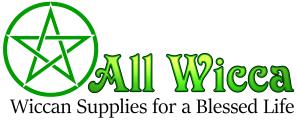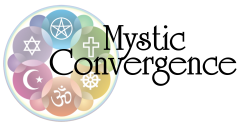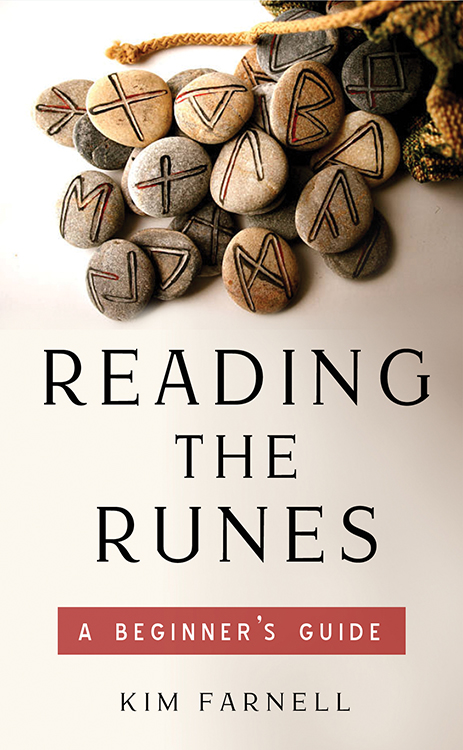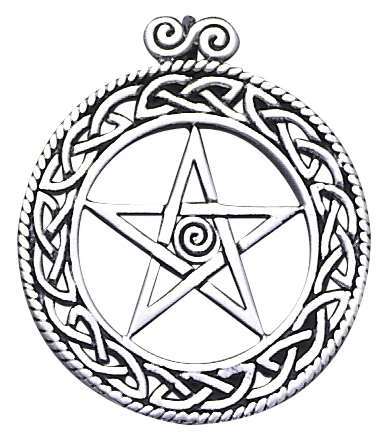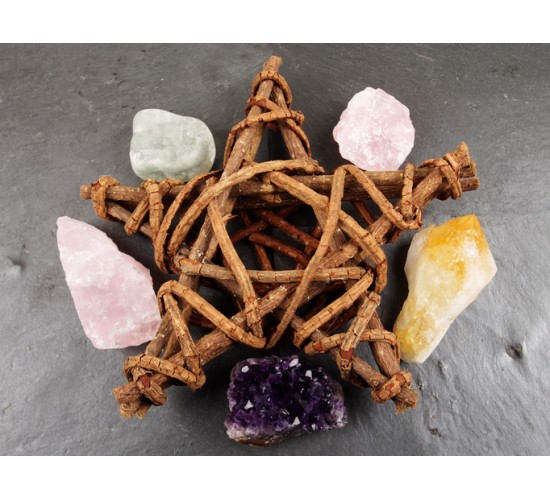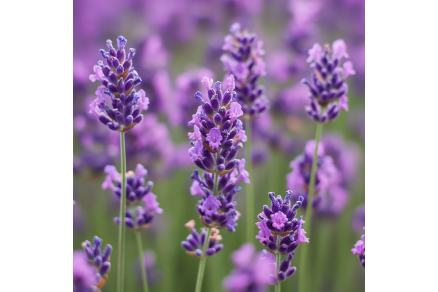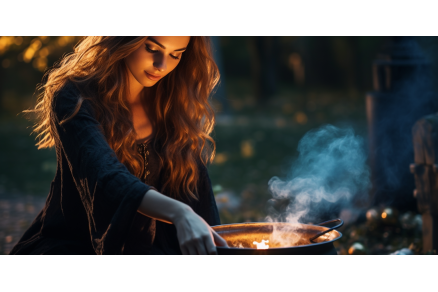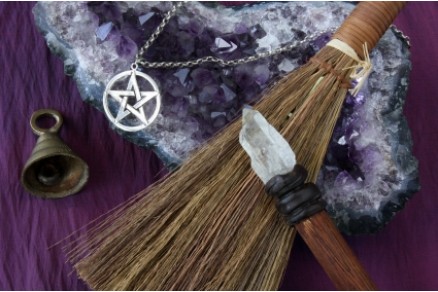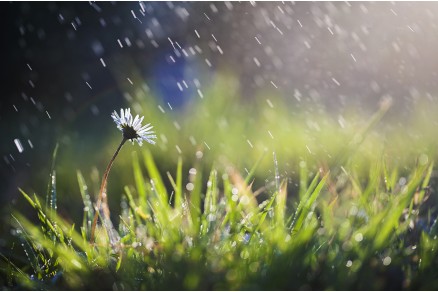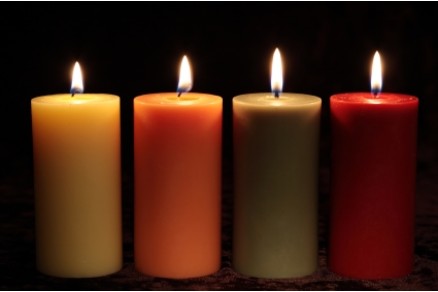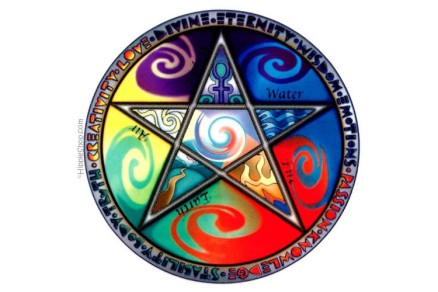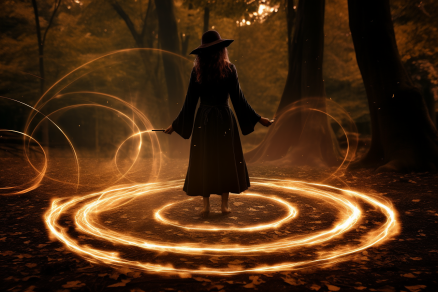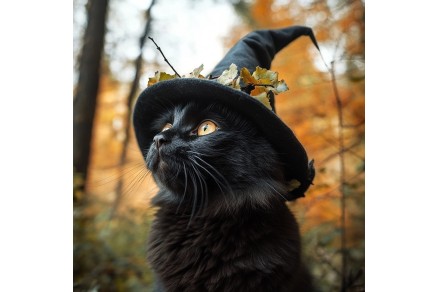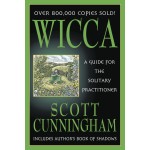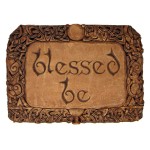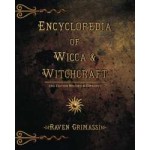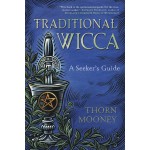5 Misconceptions about Traditional Wicca
- 1258
- 1
Traditional Wiccans usually aren't very vocal but don't make the mistake of assuming we aren't there.
I don't know if you've noticed, but we're living in the midst of a witch craze. Between American Horror Story, a Charmed reboot, and countless clothing lines pushing a "witchy aesthetic" (even Target has moon phase and zodiac-themed t-shirts this season), the witch is definitely in. Some of the hottest self-help and inspiration books on the market today are catering to newly affirmed "witches," many of whom look very different from those we're used to seeing.
The people of this new generation aren't witches because they worship the old gods and seek to explore the occult mysteries of yore, but because they are starting their own businesses, reclaiming their bodies and social power, and finding beauty in the unusual and, sometimes, macabre (check out all the animal skull motifs).
Yes, these days witches are everywhere, and who and what witches are is changing all over again. So much has changed, in fact, that many are left wondering: as witchcraft changes with the time, what good is plain, old Wicca anymore
Wicca has been in the public eye for almost seventy years. For many Pagans and witches, Wicca was their gateway into the world of magic, the New Age, traditional witchcraft, and countless other paths. Many genuinely explore Wicca only to find that it isn't for them. Increasingly, others pass it over from the get-go. Aside from maybe just being old news, with the rise of traditional witchcraft, Luciferian witchcraft, secular witchcraft, and other Craft traditions, Wicca has even come to have a bit of a bad reputation. On online hubs like Tumblr, YouTube, Reddit, and Twitter, Wicca isn't just stale, it's "watered down," "declawed", "shallow" and "problematic".
With so much more variety available, has Wicca had its day in the sun? Haven't we all already seen what it has to offer?
But while the nineties and early two-thousands saw eclectic Wicca exploding in both publishing and media, an earlier form of Wicca survived just under the surface: coven-based, initiatory, traditional Wicca. And while more popular, solitary Wicca was largely responsible for shaping the public perception of the religion, traditional Wicca still holds some surprises for seekers, which I discuss at length in Traditional Wicca: A Seeker's Guide.
Here are 5 common misconceptions about Traditional Wicca:
1. The Wiccan Rede and Threefold Law Aren't Universal
Popularly, these are regarded as the cornerstones of Wiccan belief. We don't use curses, we don't hex, and we don't manipulate people, not even if we're trying to do something helpful. If we do, it all blows up in our faces three times stronger than what we initially put into the spell. Right? Well, maybe. But the truth is that really depends on your tradition and your coven. A lot of people don't realize that some of the most popular interpretations of the Wiccan Rede were actually added well after Gardner's heyday and weren't part of the ethos of many of the earliest Wiccan covens. Many contemporary Wiccan initiates do not subscribe to either the Rede or the Threefold Law. So if you think traditional and other non-Wiccan witches hold a monopoly on baneful magic, think again.
2. Traditional Wicca has Specific Deities and Spirits
One of the most widely known (and heavily criticized) features of Wicca is that the religion centers on the worship of an all-encompassing Goddess and God, who go by many names and may even contain all other deities, like facets on a big diamond. Wiccans simply choose a god and a goddess from their favorites pantheons, put them in a magic circle, and off they go to work Wiccan magic. This leads many to call us shallow, or even to accuse us of cultural appropriation.
Wicca, however, is very much a product of the British Isles, and this is part of its appeal for many interested in connecting with this region and era in history. Most Wiccan lines work with very specific deities, whose names are secret and revealed only to initiates. The use of "the Lord and Lady" and "the Goddess and God" in more public spaces enables Wiccans to preserve the sacredness of those names. They are titles, not placeholders for other deities.
Of course, some Wiccans may also work with gods and spirits outside of a strictly Wiccan context, but that doesn't mean that we're conflating one with the other.
3. The Book of Shadows Is an Actual Text, Not Your Personal Journal
In eclectic Wiccan spaces, we're used to thinking of a book of shadows as a personal magical journal, there to collect your personal thoughts, the rituals you perform and the spells you write, and the results of your workings. In traditional Wicca, however, the Book of Shadows is actually a singular text that is passed within a lineage of witches. It's traditional to copy this text by hand so that you may have your own copy. You may choose to add to it over time, but fundamentally it remains a separate text. There may be multiple versions within a single tradition (as you can imagine, passing around a copied book from initiate to initiate can be a little like a game of telephone, and some things get a little garbled over time), but it is not something that the witch simply creates from scratch. Wicca, it turns out, is a "religion of the book" after all.
4. Some of Us Are Solitary
Traditional Wicca is coven-based, yes, but not all of us stay in covens. Not everyone progresses through the hierarchy and becomes a coven leader, takes on students, or even stays with the coven that initiated them. Some practitioners study for a while, learn with a group, and then go off and do their own thing. Even witches who circle with a coven will still do most of their work alone (you don't stop being a witch just because you won't see your coven for a while!). So even though there may not be a traditional coven in your area, that doesn't mean there aren't traditional Wiccans around (even some who may be willing to teach and mentor newcomers). As is true for many other kinds of witchcraft, Wicca is fundamentally a personal, solitary art. A group provides guidance and community, but your witchcraft is still your own.
5. There Are More of Us Than You Think!
With the rise of eclectic, do-it-yourself Wicca, traditional varieties quickly took a backseat. In many books, the old lines are discussed in the past tense. And with the emphasis on secrecy, it's no surprise that many traditional Wiccans never reveal themselves in any public way. A lot of people think we just aren't around anymore! But, in fact, our numbers are rising. Healthy covens exist in many large cities and even in some surprising out of the way places. Where I live in the American South, place many assume would be hostile to witchcraft, traditional Wicca is booming, with young priestesses and priests planting new covens and outer courts throughout the Carolinas, Tennessee, Virginia, Georgia, and Florida. Just imagine what's happening in more progressive regions! Traditional Wiccans usually aren't very vocal but don't make the mistake of assuming we aren't there
As time moves on, witchcraft will continue to change and grow with each new generation of practitioners. The media will always impact the image of the witch, and our changing cultures will bring new challenges. Our many different kinds of witchcraft will change as we do, filling the shifting needs of the communities that practice them. Alongside these cultural shifts, traditional Wicca has survived and thrived in the shadows, though many don't realize it's there.
=========================
Thorn Mooney (c) Llewellyn Publishing Inc. Originally Published in The Llewellyn Journal - used with permission. All rights reserved.
Related Posts
What is a Magic Amulet or Talisman? How do I use it?
- 2800
- 1
When you are considering something to empower (or enchant if you want to use a more magical sounding term), consider what you want it to do...and look at the design to see what it says to you. Then le..
How to Empower your Amulet or Talisman
- 2757
- 2
A few posts ago, I talked about how an amulet or talisman was just a hunk of metal - unless you empower it. This time, I'll expand a little more on it and tell you how to empower it for your intent.
The Magic of The Spring Equinox
- 2831
- 0
We only get 2 Equinox's a year - the time when Earth is in total balance and harmony. Embrace the Spring Equinox - a time of rebirth and new beginnings.
Celebrating the Autumn Harvests
- 2614
- 0
Just as Native Americans and British colonists joined together in a feast of thanks to the deities who sustained their lives, we can also share this universal theme of the Harvest Home with others. We..
Embracing Your Dual Nature: The New Moon in Gemini on June 18, 2023
- 1422
- 0
Prepare to embark on a celestial journey as the New Moon in Gemini graces the sky on June 18, 2023. This powerful lunar event brings with it a harmonious blend of cosmic energies, inviting us to explo..
The Magic of the Pentacle - What is a Pentacle?
- 3472
- 0
The interpretations of the pentacle and pentagram can differ among various belief systems and personal perspectives. We explore the differences of these sacred symbols in this article.
Embracing Magic: Living an Enchanted Life Every Day
- 2836
- 0
Discover the magic of living an enchanted life, where everyday moments are infused with wonder and joy. Unveil the secrets to embracing enchantment and creating a life filled with magic and possibilit..
The History of Friday the 13th: Unlucky or Misunderstood?
- 2836
- 0
Friday the 13th has been etched into popular consciousness as an unlucky day. But where did this belief come from, and why do we still hold onto it so strongly in modern times?


